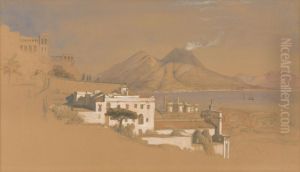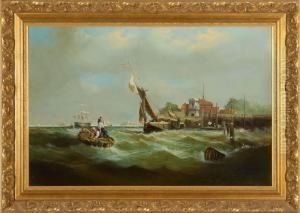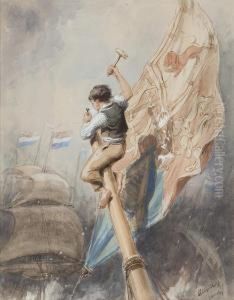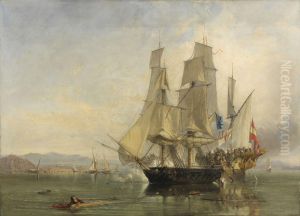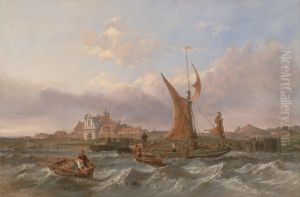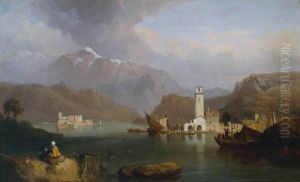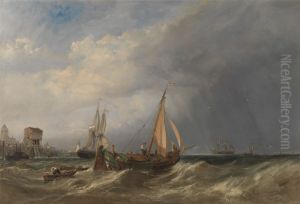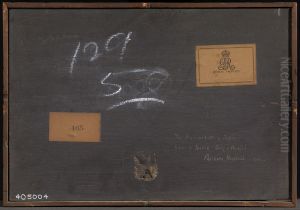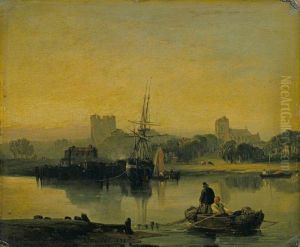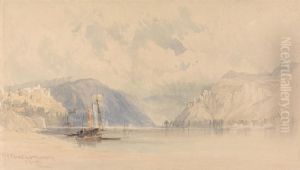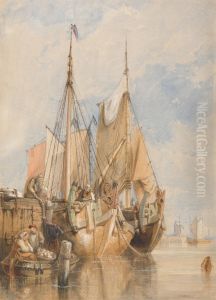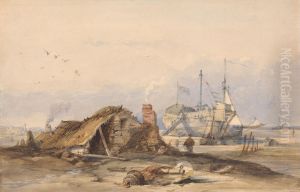Clarkson Frederick Stanfield Paintings
Clarkson Frederick Stanfield, born on December 3, 1793, in Sunderland, England, was a prominent 19th-century British painter renowned for his marine and coastal scenes, which captured the Romantic era's fascination with nature and the sea. His early life was marked by a series of adventures and challenges that shaped his artistic journey. Initially, Stanfield's career did not start in the arts; he went to sea at a young age, which profoundly influenced his later work. The experience of working on ships and the extensive travel provided him with firsthand knowledge of the sea and its changing moods, which became a central theme in his paintings.
Stanfield's artistic career began after he settled in London and turned his attention from the sea to the stage, working as a scene painter for various theatres, including the Drury Lane Theatre. His work in the theatre developed his skills in creating dramatic and atmospheric effects, which he later applied to his canvas paintings. In 1820, Stanfield exhibited at the Royal Academy for the first time, and his work quickly gained recognition for its detailed realism and the romantic allure of maritime subjects. His reputation as a leading marine painter was cemented by his election as an Associate of the Royal Academy in 1832 and as a full Royal Academician in 1835.
Stanfield was not only celebrated for his seascapes but also for his picturesque landscapes and historical scenes. His travels across Europe, particularly in Italy and France, influenced his work, introducing brighter palettes and a more serene approach to his subjects. Despite the Romantic era's inclination towards the dramatic and the sublime, Stanfield's work often portrayed a more serene interaction between the sea and humanity, reflecting both the beauty and the peril of maritime life. He was a contemporary of J.M.W. Turner and Charles Dickens, with whom he maintained friendships. Dickens, in particular, admired Stanfield's work, and Stanfield contributed illustrations for some of Dickens's publications.
Clarkson Frederick Stanfield's legacy is that of a master marine painter whose work captures the spirit of the sea and its environs with a blend of accuracy and romanticism. His contributions to the art world were widely recognized during his lifetime, and he remained prolific until his death on May 18, 1867. Today, his works are preserved in major collections and museums, serving as a testament to his enduring influence on British art and the marine genre.
